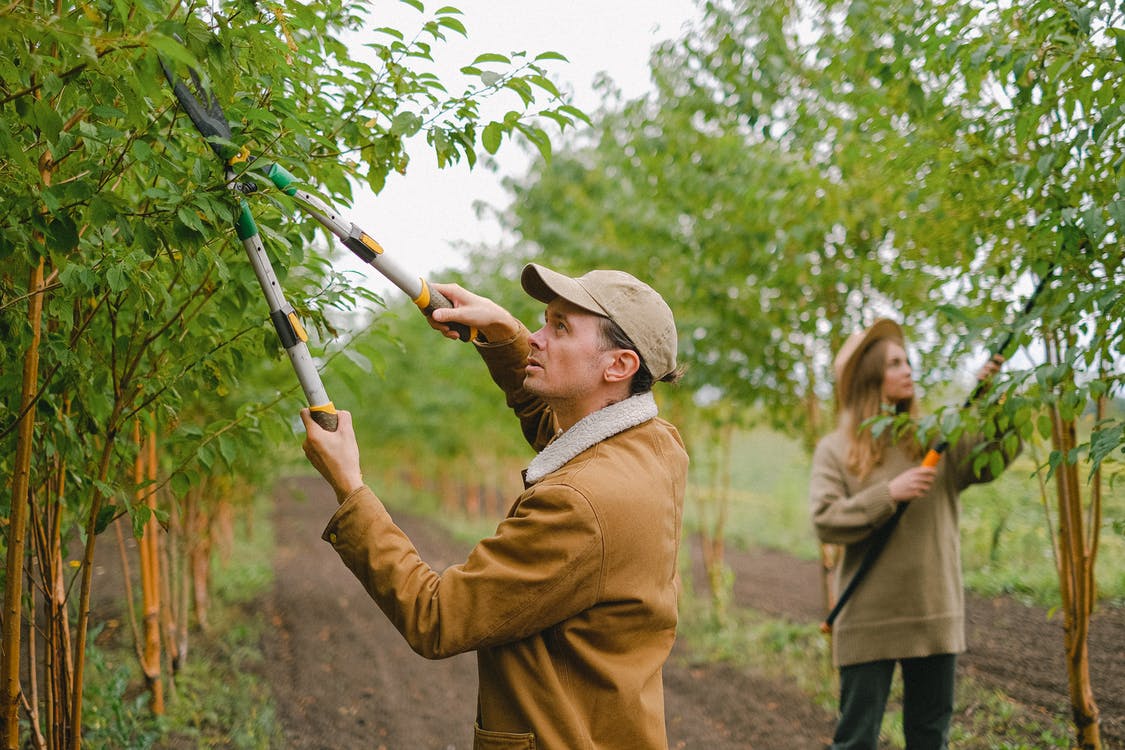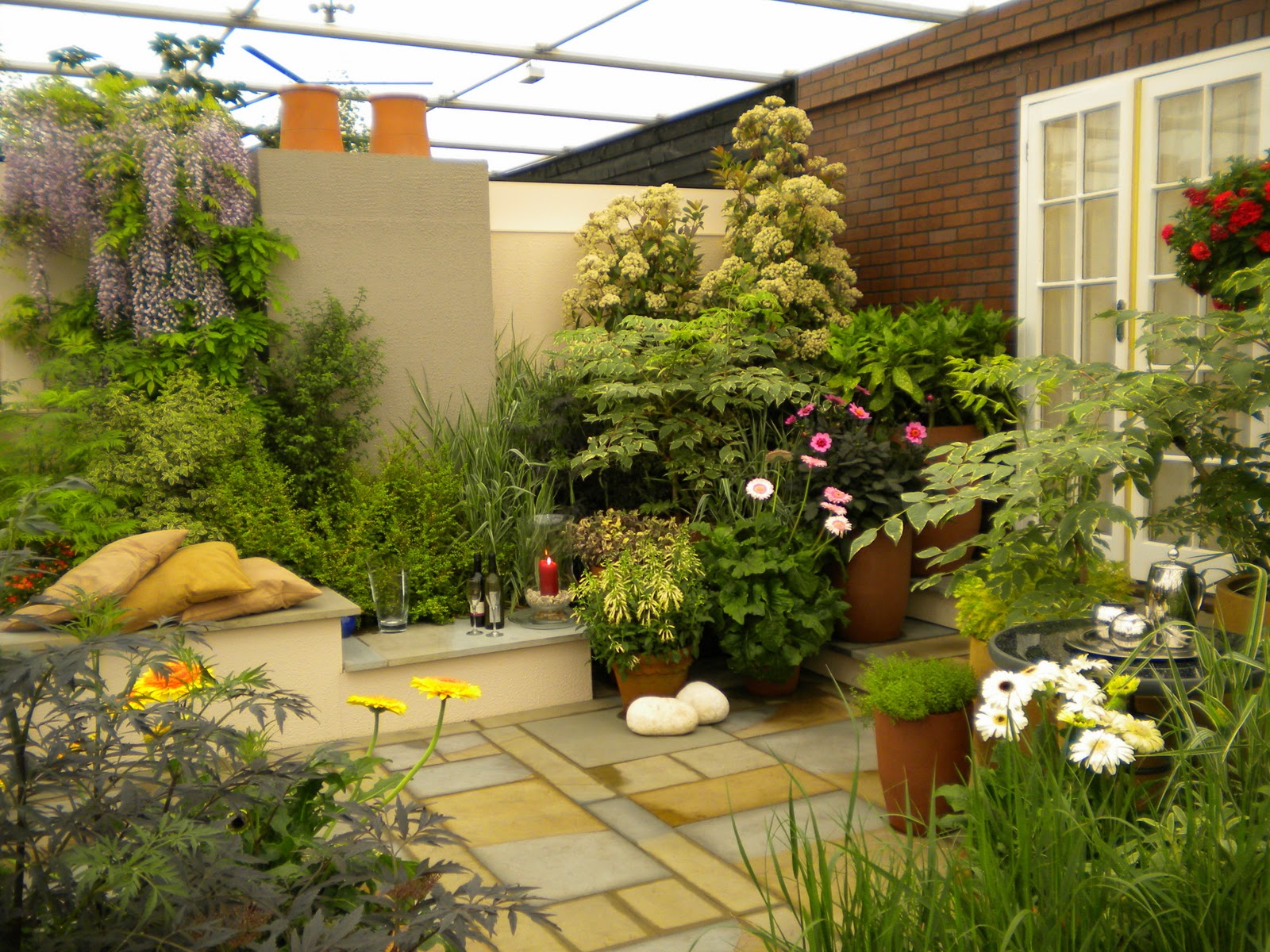As summer comes to an end, fall brings cooler temperatures and fallen leaves. However, this is not the time to let go; garden maintenance at this time is crucial. We give you all our best tips on what tools to use, how to trim shrubs, and what you can do in your garden in autumn!
1. Prepare your tools

Before you start, you need to prepare the right equipment to maintain your garden: the pruning shears, an essential tool for cutting leaves and plant roots, the wheelbarrow for carrying heavy loads, the shovel, the rake, the watering can, and the mower, if you have a lawn. In addition, if your garden is large, you can opt for a blower, which will make your work easier. You can also rent one for a few autumnal uses. Don’t forget to bring a pair of gloves to avoid any risks.
2. Clean up your garden and rake up the leaves
With the arrival of fall, you may have already noticed that your garden doesn’t look as nice as it did during the summer. To remedy this, collecting the dead leaves that may have accumulated over the past couple of months is important and putting them in plastic bags. Remember to repeat this step on a regular basis, especially if the wind tends to settle in your area.
Don’t forget to remove any weeds that have already started taking hold in your garden. Why is this important? First, the dead leaves keep the humidity and suffocate the lawn. It is also the occasion to clean all your decorative elements, such as the pebbles at the edge of the paths or small garden gnomes. The quality of the lawn may be altered, and you will no longer enjoy a soft and beautiful lawn in summer.
3. Prune your shrubs

In the maintenance of your garden in autumn, the step of pruning your shrubs is unavoidable. However, before going into action, be sure to disinfect your cutting tools. Remember to clean the handles with black soap for chainsaws, saws, pruning shears, etc., then disinfect the blades with methylated spirits. Why is it important to be thorough? It would be a shame to infect your shrubs or transmit disease to them. With the help of methylated spirits, you will eliminate fungus, bacteria, or viruses that could stagnate on your tools.
The next step is to prune your trees: remove bad shoots and fragile branches that overlap. Remember to prune sparingly, as the goal is not to damage your shrubs. You should cut as little as possible so that the winter frost does not damage your plantations too much. However, it is still necessary to remove some. Why take care of your shrubs? In addition to enjoying green and flowering plants, some of these plants allow you to protect your home against burglaries. This is what we call defensive hedges!
You can easily prune deciduous shrubs, i.e., those that lose their leaves with the seasons. Also, this is an opportunity to cut back on certain climbing plants that have become troublesome, such as honeysuckle or ivy. If these plants can add character to a home, they quickly become invasive during summer. Take advantage of the fall to reduce their quantity so that they do not overflow during the summer.
Remember to also prune your fruit trees, such as apple or pear trees. By lightening some branches, they will have more vitality, and the tree’s energy will be able to concentrate on the development of its fruits. Cut off damaged and dead branches first.
4. Prepare your soil for the summer garden
In the maintenance of your garden in autumn, it is important to already think about the preparation of the soil that will host your crops. The objective is to have rich and fertile soil so that your plantations give the expected result. Indeed, the winter period and its frost can impoverish the soil. Also, all the energy offered by the micro-organism during the summer season fades away at this time. It is recommended to counteract this by taking care of your garden in the fall to benefit from truly enriched soil in the spring.
Note, however, that this preparation must be done gently; that is, one must be careful not to attack the micro-organism, the life under the surface, and the roots of the shrubs or trees nearby. All these elements are indeed essential for a healthy vegetable garden. Be careful to be gentle with your soil and only use a small rake or claw, even if you notice that the soil is compacted or packed.
Also, consider preparing your soil by feeding it with quality compost. Spread a thick layer of compost that you have prepared throughout the year. This will provide insulation from the cold and feed wildlife, such as earthworms, that will help you grow your garden. You don’t need to turn your soil to bring in the compost. Just leave it on the surface.
5. It’s time to move your plants!

Feel like changing the layout of your garden? Then take advantage of the fall season to do so. You will be able to transplant your plants without difficulty. The humid but not too cold soil will make the operation easier. Also, the plants will be able to take advantage of a long enough time to take their new marks and develop their roots.
Sound off in the comments section below, and tell us what you want to read next and if you want to read more about taking care of your garden in autumn.




1 thought on “Top 5 Tips To Take Care Of Your Garden In Autumn”